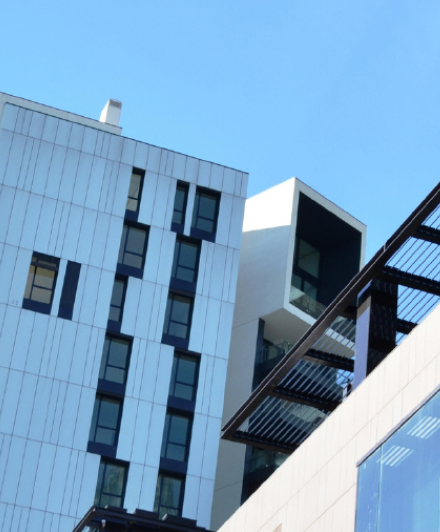As private credit has grown, direct loans from private lenders have become a fixture in corporate financing. The rise of private credit began after the Global Financial Crisis era, as regulatory regime shifts pushed banks to retrench away from private lending and toward syndicated financing. Non-bank lenders helped close the lending gap, which resulted in a meaningful shift toward private credit as shown by the growth in assets under management in Exhibit 1. Over the last two years, syndicated markets have been largely shut, and borrowers have gravitated to private lenders for capital.
EXHIBIT 1: THE GROWTH OF PRIVATE CREDIT
Private Credit Assets Under Management
As we assess today’s market environment, the rapid growth in Private Credit overall has raised questions for some about how private loans will stand up to higher-for-longer interest rates, slower economic growth, and eventually, a reopening of capital markets.
We recently sat down with KKR Global Head of Private Credit Dan Pietrzak to understand why he thinks the environment for private lending will remain positive in the coming years, where he’s seeing risks and opportunities, and the outlook for the asset class.
KKR: How would you describe the environment for direct lending?
Daniel Pietrzak: Dislocation in the syndicated loan or bond market often creates opportunities for private lenders. I think today’s market is one of the best lending environments since the Global Financial Crisis. Reference rates have increased, and over the last several months we also saw a period where spreads widened and there was an uptick in OID and call protection terms. As such, we have a number of loans that have yields north of 12%, up nearly 500 basis points from where they were just 18 months ago. Beyond that, we’re able to lend to larger companies that typically would have relied on syndicated financing because they don’t have anywhere else to go while the public markets are effectively shut. This dynamic makes for much more lender-friendly terms and conditions, with better structures and tighter documentation packages.
KKR: How long do you expect this favorable environment to last?
DP: I think the expiration date will be measured in years, rather than months or weeks. I think rates are going to be higher for longer, and volatility in the syndicated markets could be, too. We haven’t had a recession yet, and recessions usually put more volatility in the market. Private equity firms are sitting on a lot of dry powder, which will ultimately fuel more transactions. Coming out of the pandemic, more and more people have decided to borrow in private debt markets versus the public debt markets, and I think that trend will continue (Exhibit 2). Borrowers want flexibility and certainty of execution, and especially after navigating the pandemic, they want to know their lenders, especially in volatile environments. It’s a different feeling when you can pick up the phone and call your lender, versus having dozens of lenders in a syndicated financing.
KKR: What are you excited about in direct lending?
DP: Thinking back to the Global Financial Crisis, when private credit really started to take off, direct lending used to be more of a trade—it was solving for a problem that businesses had because banks were taking a step back in response to a full-scale tightening of regulatory rulebooks. Now, private credit is a $1.5 trillion market with the capacity to do larger deals. The syndicated loan market and the high yield market are never going to go away, but I think direct lending has become a viable and equivalent alternative funding source for companies.
EXHIBIT 2: AUM GROWTH FORECASTS FOR PRIVATE CREDIT
KKR: How would you describe the level of risk in the market?
DP: As exciting as we think the market is for new loans, lenders should be mindful about their existing portfolio. Higher interest rates make it more difficult for companies to service their debt. And between COVID-19, supply chain issues, and wage inflation, the road has been bumpy. Companies that have been able to pass along rising costs through price increases have been able to manage through this just fine, and those that haven’t are struggling. When we evaluate new loans, the ability to pass through price increases is one of the key characteristics that we look for in a company, along with cash flow stability, to assess whether they can weather the bumpy time periods in the market cycle.
KKR: Do you foresee a large wave of defaults in private direct loans?
DP: Defaults have ticked up lately, and I think they will inevitably go up from here—but they have been low from a historical perspective for some time. It will be important to tightly monitor existing portfolios and have strong workout teams and capabilities in a market like this. However, there is also a long-running discussion about whether there is more risk in the private credit market, and I don’t believe there is. I think private credit providers have been generally very mindful about asset liability mismatches. I think that’s important, especially looking at the recent bank failures in the U.S. Those weren’t credit issues; they were duration-driven liquidity issues. I’m not expecting that to be a problem in private markets.
KKR: How are you thinking about managing risk in new lending?
DP: Being selective and being diligent about diversification is key. We want to focus on defensive sectors and larger borrowers to limit defaults and to enhance recovery potential if there is a default. Having strong portfolio monitoring practices and strong workout teams is really important, too. Our dedicated portfolio monitoring team works independently alongside our investment teams, and our workout and restructuring group helps us proactively determine signs of trouble so we can get involved early.
KKR: Why the focus on larger borrowers?
DP: In our direct lending business, we focus on the upper end of the middle market, which we define as companies that are $100 million or more of EBITDA, because we think it’s a defensive stance. These companies almost by definition have better, more experienced management teams. They probably have less customer concentration, less supplier concentration, and generally more levers to pull if something goes wrong. Overall, we believe that larger borrowers generate better risk-adjusted returns, as they are better positioned to withstand market volatility without compromising on yield as a lender.
KKR: Where do you see the most risk in today’s market?
DP: There are a couple parts of the market that I think people need to be mindful about right now. One of those is health care. Many businesses are capped on the revenue side, and that can be quite challenging as costs go up. That said, our definition of healthcare exposure is broad, including dental and veterinary care, and we’ve continued to see pretty good growth in certain areas. We tend to prefer healthcare providers that perform necessary care, rather than discretionary care.
We also think there is some risk in annual recurring revenue deals, which were popular several years ago, when the market was fairly active in lending to companies that were not yet profitable. Essentially, these loans set terms based on revenues that are somewhat predictable from things like subscriptions or contracts, instead of EBITDA. We tend to think of ourselves as cash flow lenders, focusing on borrowers that already have a recurring and stable set of cash flows.
KKR: On the flip side, are there sectors that you find very attractive?
DP: I think we’ve been consistently positive on some of the larger software names out there and in the business services space, and we’ve been more active than most in the insurance brokerage business. All those sectors are generally non-cyclical. We’ve been quite cautious on cyclical sectors, like consumer discretionary. I think, consumers are in a pretty good spot, but it’s hard to predict where that goes. We’re also avoiding sectors where we think a workout would be hard in the event of a default.
But all that said, we’re not trying to make big sector bets. We’re trying to lend to companies that we think are going to survive. In any economic cycle your goal is to be right 99 out of 100 times. As such, our portfolios are very diversified among a variety of industries.
KKR: We talked about how many borrowers have turned to private lending because they couldn’t easily find financing in other parts of the capital markets. When do you think syndicated markets will reopen, and what would that mean for direct lending?
DP: Even in the direct lending space, our volumes have been lighter than normal. The M&A market is the catalyst for most of our deals, and it has been slow (Exhibit 3). A lot of people have attributed that slow M&A pace to a lack of available financing, but I don’t think that’s correct. Private debt providers have been prepared to step in while the syndicated loan market and the bond market have been effectively shut. I think the big issue has been the mismatch on valuations — sellers who want to sell at X, and buyers who want to buy at Y. I think we’re starting to see that converge now, and I think we’ll see a resurgence in M&A as we approach the start of 2024, as well as a comeback in new issuance in the loan market.
EXHIBIT 3: M&A IS NOT BACK TO PRE-PANDEMIC LEVELS
M&A by Volume and Value
The market believes that inflation has started to run its course and is probably coming back down. However, we could still see a handful of rate increases from the U.S. Federal Reserve. We haven’t had the mild recession that I believe we’re going to get, and we haven’t had a default cycle yet, so I think some of these dynamics in capital markets will continue to play out in 2024 and 2025.
KKR: Going back to what you said about tighter documentation being available in this market, what exactly are the terms that lenders have been able to get? And why does it matter?
DP: This varies loan to loan, but often it could be the ability to get a financial covenant, or perhaps something like a much tighter definition about what EBITDA is. It could be board observation rights, additional information rights in terms of financial reporting and management discussion and analysis. Tighter documentation packages help lenders set up tighter rules and processes to increase the chances that they will be repaid in full.
KKR: How do you view the outlook for longer-term growth in direct lending?
DP: I think we will continue to see the market grow meaningfully. Growth in direct lending was driven originally by how much middle-market private equity capital was raised, but the funding base has expanded and is no longer coming from just the supply side. The market has capital bases that can address larger deals and recently, a fair amount of money has been raised in the non-traded BDC space. Lenders have reached a size and scale to do billion-dollar deals, and we are seeing an increasing number of those. That simply was not the case in 2019 or the early parts of 2020. In fact, there have probably been 50 deals north of $1 billion since that time. In addition to a larger capital base to address borrowing needs, the fact that more and more borrowers wanted to be in the private debt market has been a powerful tailwind. Overall, I think the growth rates we’ve been seeing of 14%-15% a year, on average, since the Global Financial Crisis are sustainable given how the market is evolving.


Share on